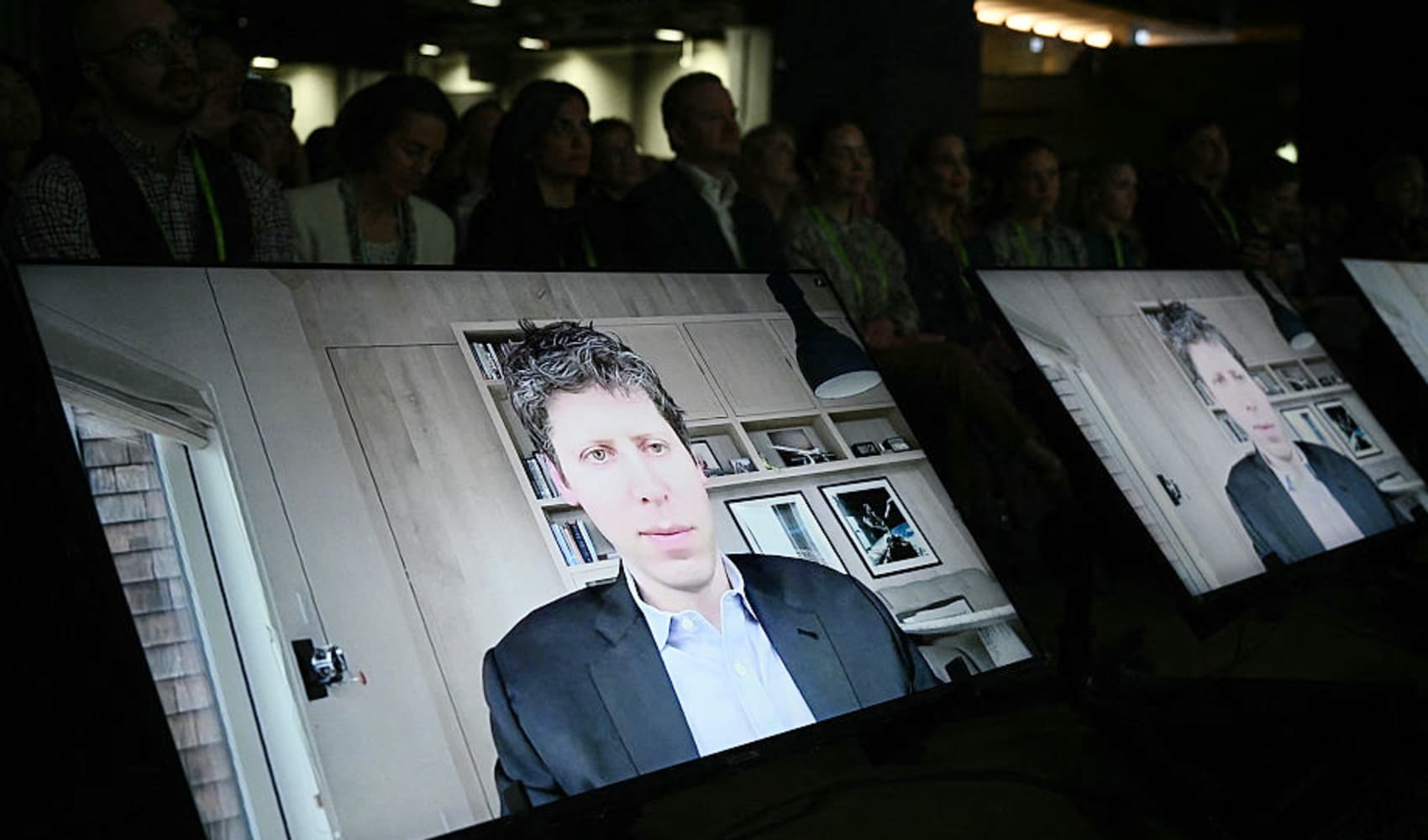Pope Leo XIV Warns: AI Is Humanity's Greatest Challenge
Pope Leo XIV's Bold Vision: AI's Looming Shadow Over Humanity
Introduction: A New Papacy Dawns, a Familiar World
A new chapter unfolds within the Vatican walls as Pope Leo XIV assumes the mantle of leadership. But this isn't your typical papal inauguration – this is a papacy stepping into a world grappling with unprecedented technological advancements. And at the forefront of Pope Leo XIV's concerns? Artificial Intelligence. Yes, you read that right. Pope Leo XIV, in his first major address, has identified AI as one of the most pressing challenges facing humanity, signaling a bold new direction while vowing to uphold core principles established by his predecessor, Pope Francis. It’s a delicate dance between tradition and the future, a fascinating blend of faith and technology.
Pilgrimage to Genazzano: Echoes of Leo XIII, a Personal Touch
In a powerful symbolic gesture, Pope Leo XIV chose Genazzano, a sanctuary steeped in history and personal significance, for his first papal outing. This wasn't just a casual visit; it was a deliberate act, a declaration of intent. The sanctuary, dedicated to the Madonna under the title of Mother of Good Counsel, holds deep ties to the Augustinian order, to which Pope Leo XIV belongs, and pays homage to his namesake, Pope Leo XIII. This trip underscores a commitment to both heritage and his own unique perspective.
The Significance of the Sanctuary
Think of Genazzano as more than just a pretty place. It's a spiritual power center, a destination for pilgrims seeking solace and guidance for centuries. The fact that Pope Leo XIII elevated it to a minor basilica in the early 1900s speaks volumes about its importance within the Catholic Church. For Pope Leo XIV to choose this location for his first outing? It's akin to an artist choosing a specific canvas to begin their masterpiece. Every detail matters.
Greeting the Townspeople: A Shepherd Among His Flock
Imagine the scene: The square in Genazzano bustling with excitement, the air thick with anticipation. Townspeople, eager to catch a glimpse of their new leader, gathered to welcome Pope Leo XIV. His arrival was more than just a formal appearance; it was an embrace, a moment of connection with the very people the Church serves. These initial interactions set the tone for his papacy: one of accessibility and engagement.
AI: A Double-Edged Sword? Pope Leo XIV's Perspective
Now, let's delve into the heart of the matter: AI. Why is the Pope so concerned? Is he envisioning a dystopian future ruled by robots? It's more nuanced than that. Pope Leo XIV recognizes the immense potential of AI – its ability to solve complex problems, to advance medical research, to improve countless lives. But he also sees the inherent risks. The potential for job displacement, the ethical dilemmas surrounding autonomous weapons, the spread of misinformation – these are just some of the challenges that keep him up at night.
Ethical Considerations of AI
The ethical dimensions of AI are staggering. Who is responsible when an autonomous vehicle causes an accident? How do we ensure that AI algorithms are free from bias? How do we prevent AI from being used to manipulate and control populations? These are not just abstract philosophical questions; they are real-world issues with profound implications for the future of humanity.
The Legacy of Pope Francis: Continuity and Change
While Pope Leo XIV is forging his own path, he is also building upon the foundation laid by Pope Francis. The commitment to social justice, the emphasis on environmental stewardship, the call for interreligious dialogue – these are all core values that will continue to guide the Church under his leadership. It’s not a complete departure, but rather a strategic evolution, adapting to the ever-changing landscape of the 21st century.
The Augustinian Influence: Wisdom and Discernment
Pope Leo XIV's affiliation with the Augustinian order provides a unique lens through which to view his papacy. Augustinian spirituality emphasizes the importance of inner reflection, the pursuit of truth, and the need for divine grace. How will these principles inform his approach to the challenges posed by AI? Will he call for a more contemplative and discerning approach to technological development? It's a question worth pondering.
The Mother of Good Counsel: Seeking Guidance in Uncertain Times
The title of the Madonna honored at the Genazzano sanctuary – Mother of Good Counsel – is particularly relevant in the context of AI. The Church, like all of humanity, needs good counsel as it navigates the complex ethical and societal implications of this powerful technology. Pope Leo XIV’s visit to the sanctuary suggests a reliance on faith and divine guidance as he grapples with these challenges.
Education and Awareness: Equipping Future Generations
One potential strategy for addressing the challenges of AI is through education and awareness. How can we equip future generations with the critical thinking skills necessary to navigate a world increasingly shaped by algorithms and artificial intelligence? Pope Leo XIV may call for a renewed emphasis on ethics and moral reasoning in education, ensuring that young people are not simply consumers of technology, but responsible and informed citizens.
Collaboration and Dialogue: Building Bridges Across Disciplines
The challenges of AI cannot be solved in isolation. They require collaboration and dialogue across disciplines – from computer science and engineering to philosophy and theology. Pope Leo XIV may seek to foster greater communication between these different fields, creating a space for interdisciplinary collaboration and the development of ethical frameworks for AI development and deployment.
The Role of the Vatican in AI Ethics
Imagine the Vatican as a neutral ground, a place where experts from diverse backgrounds can come together to discuss the ethical implications of AI. The Church's long history of moral reflection and its global reach make it uniquely positioned to facilitate these conversations and to promote responsible AI development worldwide.
The Human Element: Preserving Dignity in the Age of Machines
Ultimately, Pope Leo XIV's concern about AI boils down to one fundamental question: how do we preserve human dignity in the age of machines? How do we ensure that technology serves humanity, rather than the other way around? This is not just a technological challenge; it is a profoundly human one.
A Call to Action: Embracing Our Shared Responsibility
Pope Leo XIV's vision for the papacy is not just a message for Catholics; it is a call to action for all of humanity. We all have a responsibility to engage in the conversation about AI, to understand its potential risks and benefits, and to work towards a future where technology serves the common good. It's about making informed choices, advocating for ethical guidelines, and holding tech companies accountable for the impact of their creations.
The Future of Faith: Navigating the Digital Frontier
The Church, like any institution, must adapt to the changing times. Pope Leo XIV's focus on AI signals a recognition of this need. The future of faith may well depend on the Church's ability to engage with the digital frontier, to use technology to spread its message, and to address the ethical challenges posed by new technologies in a thoughtful and responsible manner.
Conclusion: A Papacy for a New Era
Pope Leo XIV's papacy is poised to be one of both continuity and change. While embracing the core values championed by Pope Francis, he is also charting a new course, focusing on the critical challenges posed by artificial intelligence. His pilgrimage to Genazzano serves as a powerful symbol of his commitment to both tradition and innovation. His message is clear: AI is not just a technological issue; it is a human issue, and it requires our collective attention and action. The future unfolds, and under his guidance, the Church stands ready to navigate its complexities, guided by faith, wisdom, and a deep concern for the well-being of humanity.
Frequently Asked Questions
Here are some frequently asked questions about Pope Leo XIV's vision and his concerns about AI:
-
Why is Pope Leo XIV so concerned about artificial intelligence?
Pope Leo XIV recognizes the immense potential of AI but is also aware of its potential risks, including job displacement, ethical dilemmas surrounding autonomous weapons, and the spread of misinformation. He wants to ensure AI serves humanity responsibly.
-
Is Pope Leo XIV against technological advancement?
No, he isn't. He understands the potential benefits of technology, but he emphasizes the need for ethical considerations and responsible development to prevent harm and ensure it benefits all of humanity.
-
How does Pope Leo XIV's Augustinian background influence his views on AI?
Augustinian spirituality emphasizes inner reflection, the pursuit of truth, and the need for divine grace. These principles likely inform his call for a more contemplative and discerning approach to technological development.
-
What practical steps might Pope Leo XIV take to address the challenges of AI?
He might promote education and awareness, fostering critical thinking skills for future generations. He could also facilitate collaboration and dialogue between different disciplines, such as computer science, philosophy, and theology, to develop ethical frameworks for AI.
-
How does Pope Leo XIV plan to continue the legacy of Pope Francis?
Pope Leo XIV has vowed to continue with some of the core priorities of Pope Francis, such as the commitment to social justice, the emphasis on environmental stewardship, and the call for interreligious dialogue, while adapting the Church's approach to address new challenges like AI.


